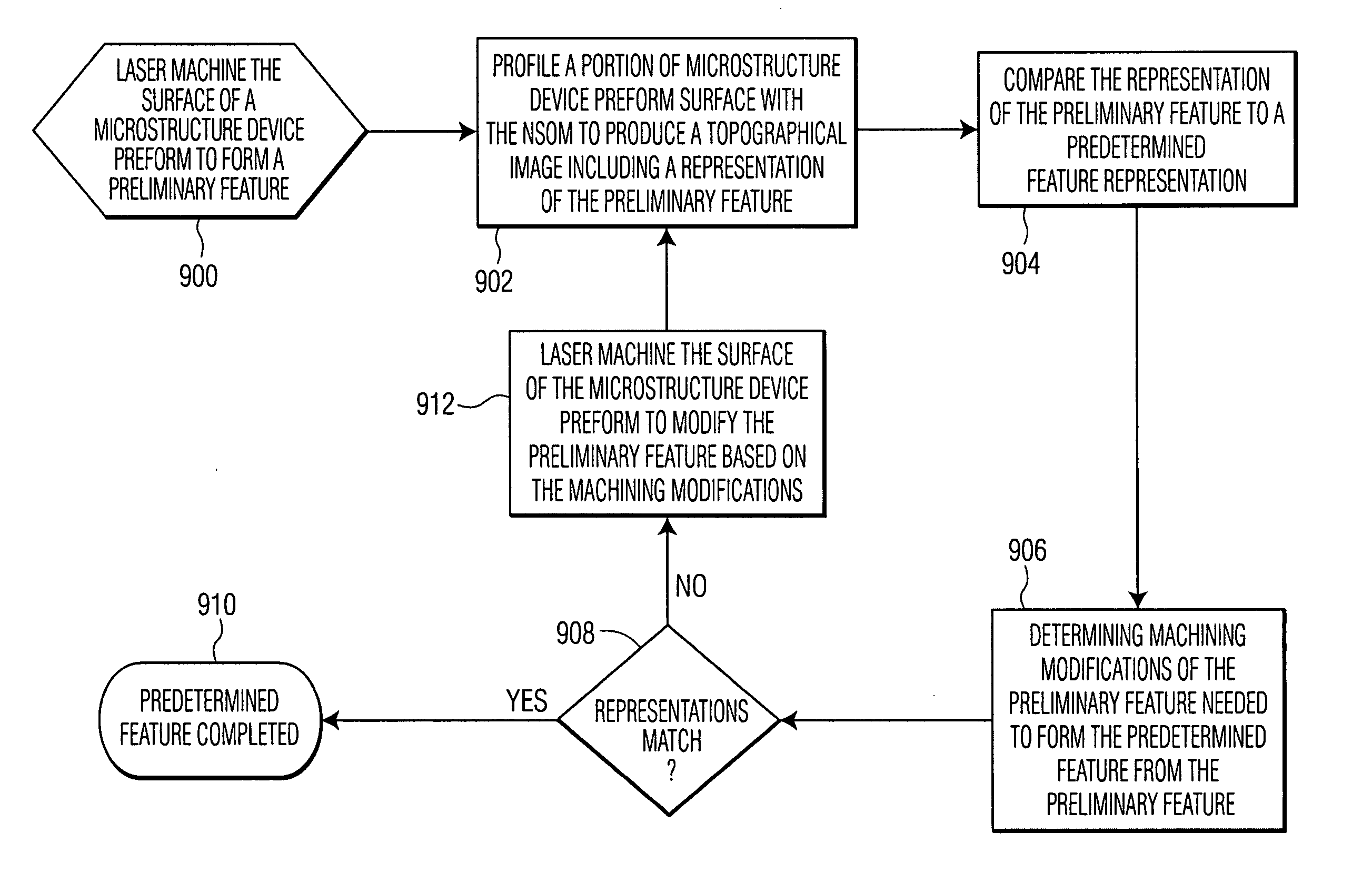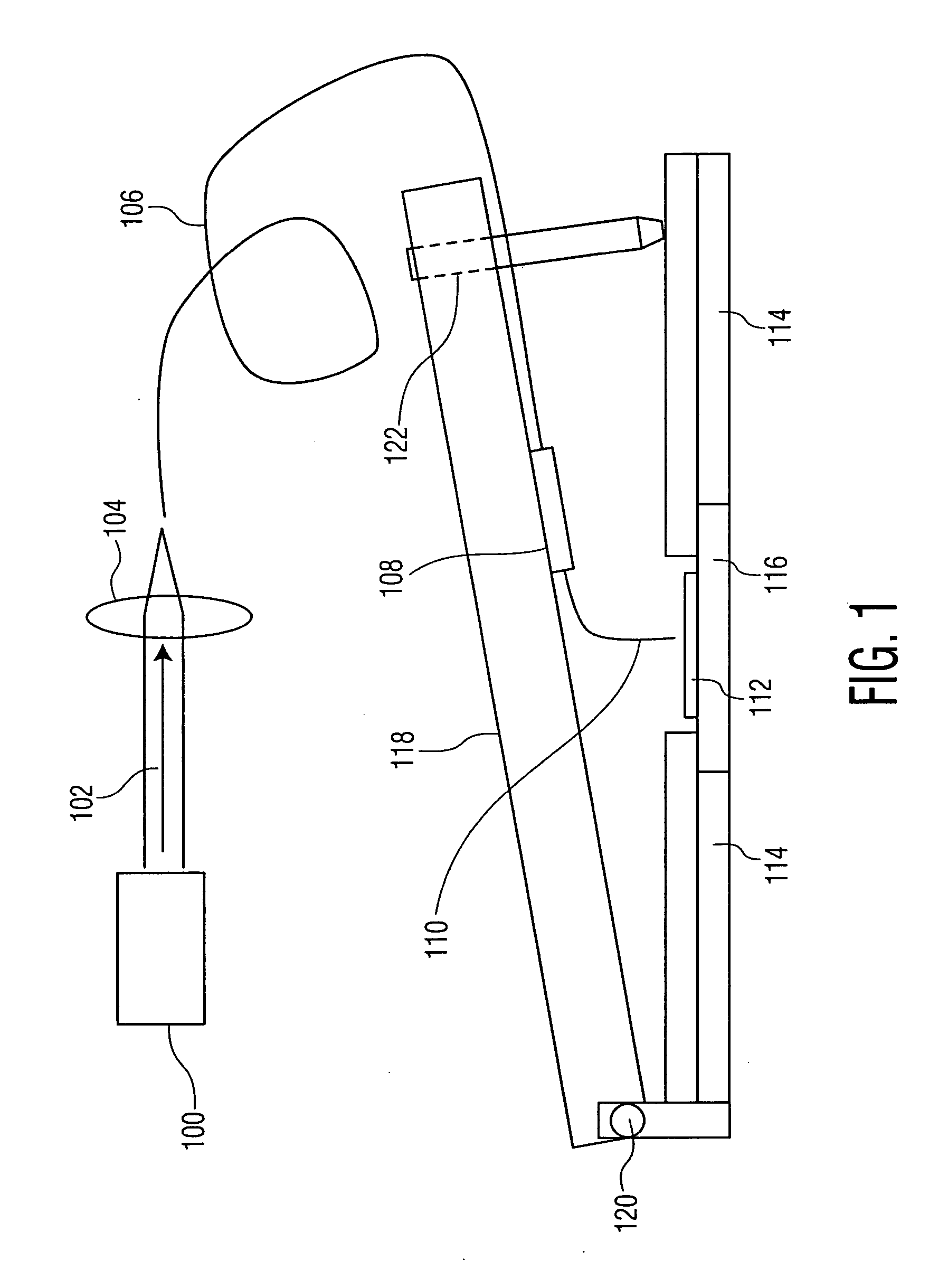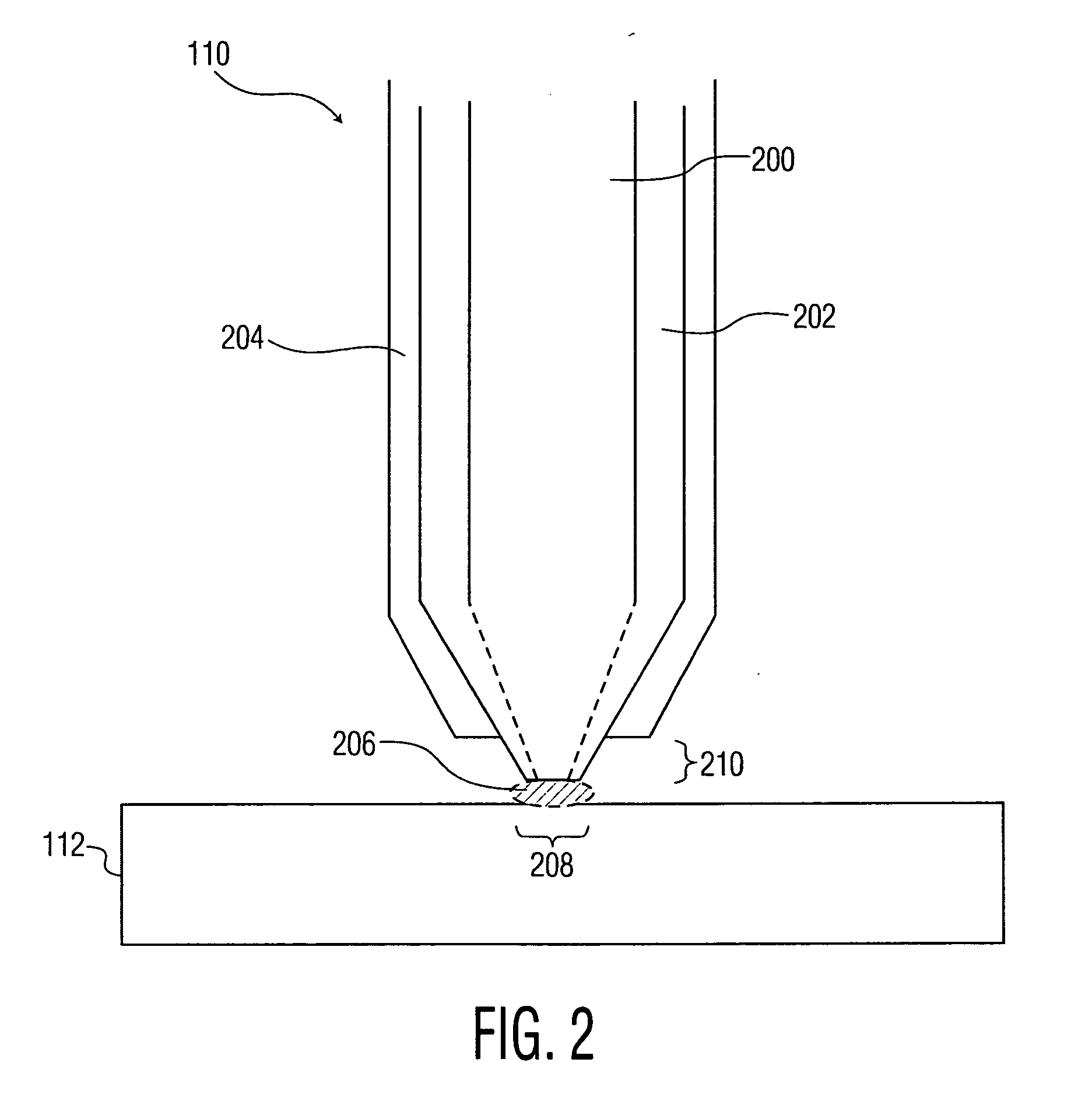Method for modifying existing micro-and nano-structures using a near-field scanning optical microscope
a scanning optical microscope and micro-structure technology, applied in the direction of scanning probe techniques, instruments, manufacturing tools, etc., can solve the problems of complex lithographic methods, high-cost techniques usually require stringent environmental conditions, and complicated manufacture of materials
- Summary
- Abstract
- Description
- Claims
- Application Information
AI Technical Summary
Benefits of technology
Problems solved by technology
Method used
Image
Examples
Embodiment Construction
[0030] NSOMs use many of the same principles as atomic force microscopes (AFMs) to accurately profile surfaces. Laser micromachining of these surfaces using near-field radiation from an NSOM probe tip may provide a number of advantages compared to using non-near-field radiation and free space optics. The advantages may include precise positioning control of the NSOM probe tip and a reduced minimum feature size. The precise motion stages used in NSOM devices may be used to provide precise horizontal (X and Y) and vertical (Z) positioning control. Additionally, the ability of an NSOM to profile a surface allows for the accurate vertical positioning of the probe tip desired to couple significant near-field radiation to the surface.
[0031] The minimal feature size that may be machined with an exemplary NSOM laser machining system of the present invention using near-field radiation is determined by the size of the NSOM probe tip, rather than by the wavelength of the laser light used to g...
PUM
| Property | Measurement | Unit |
|---|---|---|
| distance | aaaaa | aaaaa |
| distance | aaaaa | aaaaa |
| pitch size | aaaaa | aaaaa |
Abstract
Description
Claims
Application Information
 Login to View More
Login to View More - R&D
- Intellectual Property
- Life Sciences
- Materials
- Tech Scout
- Unparalleled Data Quality
- Higher Quality Content
- 60% Fewer Hallucinations
Browse by: Latest US Patents, China's latest patents, Technical Efficacy Thesaurus, Application Domain, Technology Topic, Popular Technical Reports.
© 2025 PatSnap. All rights reserved.Legal|Privacy policy|Modern Slavery Act Transparency Statement|Sitemap|About US| Contact US: help@patsnap.com



